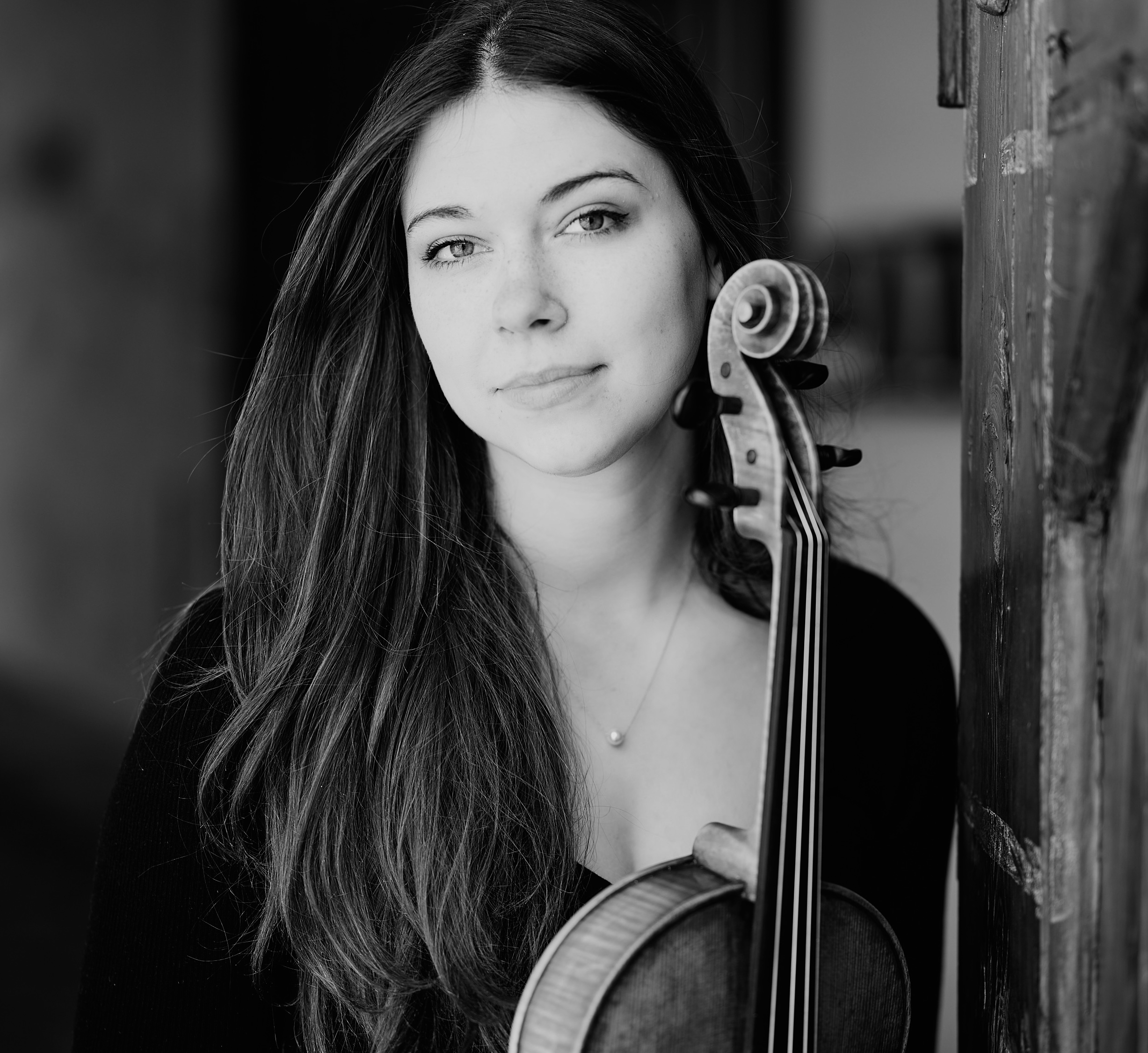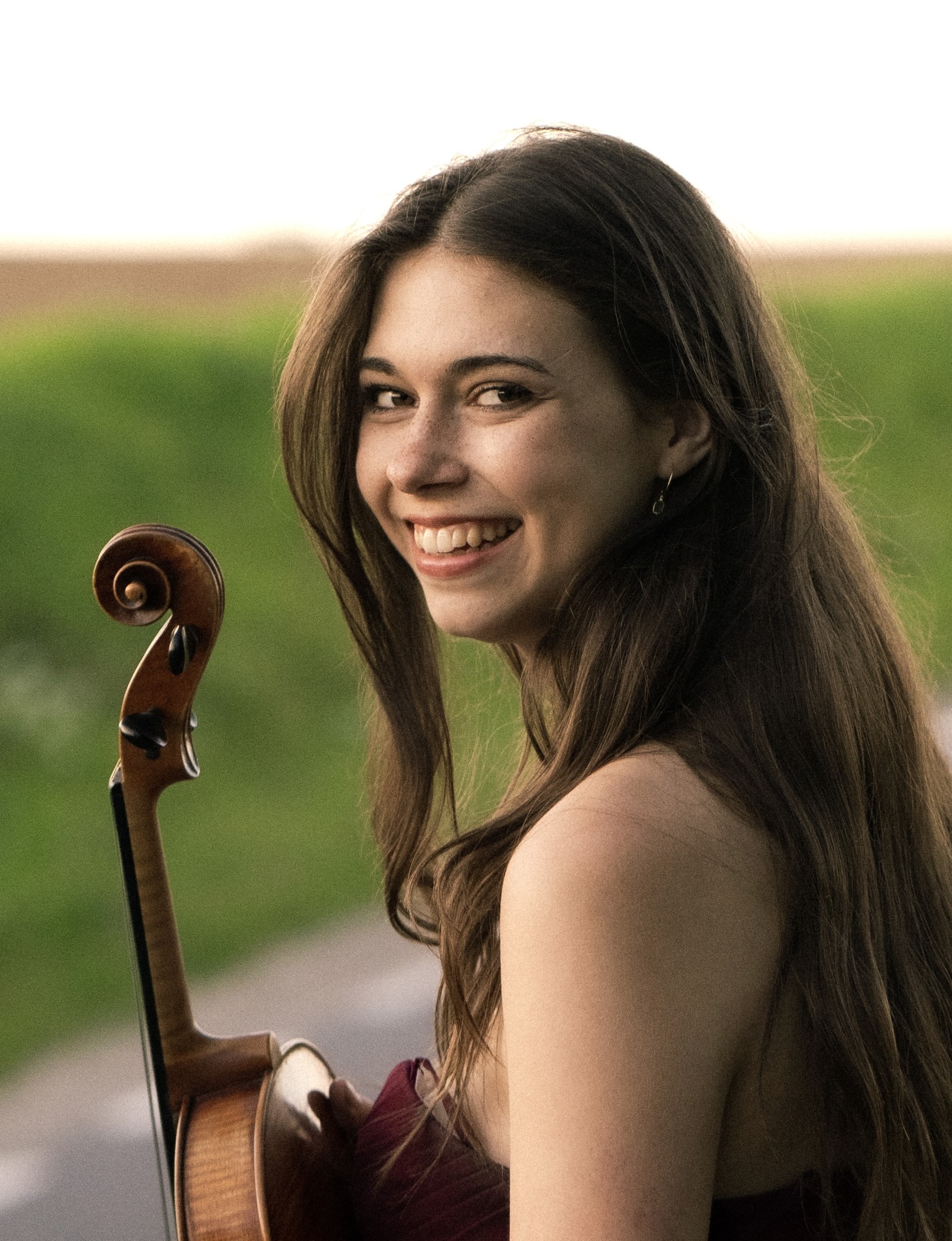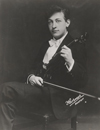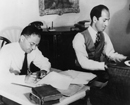People in the News
New Artist of the Month:
Violist Emma Wernig
 In many chamber settings, the viola tends to blend into the texture—which made Emma Wernig’s playing all the more striking when I first encountered her last August on opening weekend at Tippet Rise, the remote Montana arts center. Wernig appeared across three different programs. She anchored the inner lines in Vivaldi’s Four Seasons (with interludes incorporating pre-recorded local birdsong) and added lyrical warmth to Schubert’s Trout Quintet, both performed in an intimate venue modeled in part after Snape Maltings.
In many chamber settings, the viola tends to blend into the texture—which made Emma Wernig’s playing all the more striking when I first encountered her last August on opening weekend at Tippet Rise, the remote Montana arts center. Wernig appeared across three different programs. She anchored the inner lines in Vivaldi’s Four Seasons (with interludes incorporating pre-recorded local birdsong) and added lyrical warmth to Schubert’s Trout Quintet, both performed in an intimate venue modeled in part after Snape Maltings.
Wernig also took part that weekend in Copland’s Appalachian Spring in its original 13-instrument version, presented in an open-air setting sheltered by one of Tippet Rise’s signature sculptural installations. Somehow, her presence was unmistakable, helping shape and focus the varied ensembles from within.
My introduction to her playing encapsulated what first drew Wernig to the viola. She clearly thrives on the interplay of voices and the give-and-take that defines close ensemble playing. “Chamber music became my window into everything,” she says. “It’s the foundation of my solo work, my orchestral playing, everything.”
Now based in London, Wernig, who was born in 1999, is building a career that bridges Europe and the United States. She was raised in Los Angeles by parents who work in film post-production. Though they are not musicians, her family’s Austrian and German roots meant that playing an instrument felt like a natural part of childhood. “It’s more culturally normal in Austria and Germany for every child to learn an instrument,” she explains.
She began on violin but switched—reluctantly—to viola around age 12 when her teacher needed a violist to complete a student quartet. “I was offended at first,” she recalls with a chuckle. “Everyone had told me the viola was for people who couldn’t make it on violin.” Until then, her main group experience had been in large Suzuki violin classes where everyone played the same thing at once. Joining a quartet on viola turned out to be a revelation—her first true experience of what chamber music could be.
“The more chamber music I was involved with, and the more higher-level players I was exposed to, the more I just wanted to get better,” she says. “I’ve always been inspired by the people around me.”
Through programs like Junior Chamber Music and the Pasadena Conservatory’s chamber initiatives, Wernig immersed herself in increasingly serious ensembles and developed an early passion for collaborative playing. At the same time, she was training intensively in ballet with the goal of becoming a pre-professional dancer, but she decided to quit just before entering the Colburn School Conservatory at 17 to focus entirely on music.
Mentors and turning points
Early on, Pasadena-based cellist and chamber coach Andrew Cook gave Wernig a solid foundation in listening and ensemble awareness. At Colburn, violist Paul Coletti encouraged her to expand her horizons to consider Europe. Graduate studies at Yale with Ettore Causa helped Wernig grow into a confident soloist and arranger—another facet of her artistic work that holds special importance. “Ettore has known me now for ten years and has been hugely supportive and influential,” she says. “I still meet up with him whenever we’re in the same city to talk about career things.”
An especially transformative relationship came with the legendary violist Tabea Zimmermann, with whom Wernig studied in Germany during the pandemic. Zimmermann’s high artistic standards and holistic approach profoundly changed her perspective.
“She has a higher standard for music-making than almost anyone I know, across all instruments,” Wernig says. “Tabea changed how I practice and think about my own playing. She would always say that you don’t have to play badly first in order to play well later, which really stuck with me. The way I’ve practiced and the way I think about my own playing changed a lot because of her.”
Zimmermann also taught Wernig “how to listen very differently. I’m quite an instinctual player, but Tabea encouraged me to think about structure and to think of everything as building blocks that come first and foremost from the score.”
 Joining the Doric Quartet
Joining the Doric Quartet
After her studies with Zimmermann, Wernig’s path led her to the U.K.-based Doric String Quartet, which she first encountered at festivals in Scotland (on the Isle of Mull) and Norway. When the group’s previous violist stepped down, Wernig was recommended and invited to audition.
The Doric blends historically informed playing—they use period-style bows for classical repertoire—with a dedication to new commissions. “This was our first season in the new formation,” says Wernig. “Right now, about half my time is with the quartet, and half with other projects. They encourage members to balance quartet life with outside interests. I’m convinced that pursuing music in a way that makes us feel fulfilled in all ways is the best way to achieve a happy, healthy group.”
Wernig joined the ensemble midway through its recording of the complete Beethoven cycle on Naxos. Three major tours are on the horizon this season: Japan, the U.S. in March 2026, and Australia in June. For Wernig, quartet life feels like both a return and an evolution. “I’ve always said that I wanted a quartet to be part of my career, since that’s what gave me my love of music in the first place.”
A solo voice emerging
While the Doric Quartet provides a steady center, Wernig is equally passionate about her solo path. Her 2021 debut album The Viennese Viola, with pianist Albert Cano Smit (Champs Hill Records), celebrates her Austrian heritage and love of uncovering neglected repertoire, such as the D minor Sonata of late 19th- early 20th-century Austrian composer Robert Fuchs.
“It sounds like a cross between Brahms’s Third Violin Sonata and what Mahler might have written if he’d composed a viola sonata,” she says. The album also reflects Wernig’s fascination with arranging lieder for the viola.
As a soloist, she takes a wide-ranging approach to repertoire and programming. Upcoming engagements include the Bartók Concerto, Mozart’s Sinfonia concertante, and rarities like concertos by Casadesus and Miklós Rózsa. Wernig is also eager to collaborate with living composers, taking inspiration from the example of Tabea Zimmermann and from the surge of new concertos for the instrument in recent years.
“For me, the focus is always on the music itself rather than the instrument,” she says. “Ideally, the musician is strong enough that the audience just hears the power of the music.”
Meanwhile, Wernig finds additional creative outlets in photography and painting. While living in Berlin to study with Zimmermann, she even became known among fellow musicians for her headshot photography and still values that immediacy.
“I’ve always envisioned my career as something multifaceted—challenging me in many directions while fulfilling me in different ways.”
Top photo by Ettore Causa; bottom by Alexander Edelmann





 FEATURED JOBS
FEATURED JOBS

 RENT A PHOTO
RENT A PHOTO


